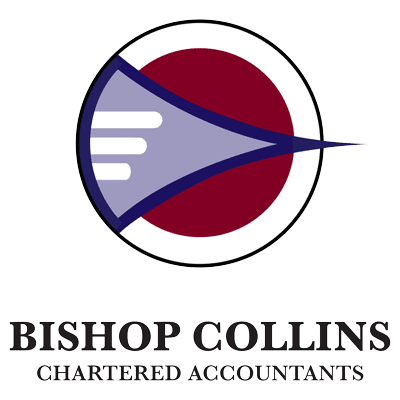“Retirement is not the end of the road. It is the beginning of the open highway.” – Unknown
For small business owners, the journey to retirement involves meticulous planning and strategic decisions that not only ensure personal financial security but also secure the future of the business you’ve built.
At Bishop Collins, we understand the complexity of this transition and are here to guide you every step of the way. This guide delves into actionable strategies, including a detailed look at leveraging the small business CGT retirement concession, to prepare you for a successful transition to retirement.
1. Financial Readiness: Crafting a Secure Future
For many business owners, retirement isn’t just about stepping away from the workforce; it’s a transition into a new life chapter requiring careful planning. Start by setting clear retirement goals and assessing your current financial situation.
Assessing Your Financial Landscape
- Budgeting your retirement lifestyle: Do you dream of travelling, pursuing hobbies, or maybe relocating? Planning for these aspirations requires a detailed budgeting exercise. Factor in the costs of your activities, potential relocation, and daily living expenses. This not only helps in setting savings goals but also ensures your retirement planning aligns with the lifestyle you desire.
- Review Your Personal Finances: Begin with a comprehensive review of your savings, investments, and expected retirement lifestyle costs. Tools like the Australian Tax Office’s (ATO) superannuation calculators can offer insights into how prepared you are.
- Maximise Your Superannuation: Contribute more to your super through concessional (pre-tax) or non-concessional (after-tax) contributions to boost your retirement savings. The current caps on these contributions are subject to change, so refer to the ATO website for the latest figures.
2. Business Valuation and Succession Planning
- Get a Professional Valuation: Understand the true worth of your business through a professional valuation. This will be the cornerstone for negotiating a sale or transferring ownership.
- Draft a Succession Plan: Decide on the future of your business – be it passing it on to a family member or selling. Detail the process in your succession plan, including timelines and training for the successor.
Additionally, consider your business’s legal and financial structure and how it will affect the transition. A well-thought-out plan eases the transfer of responsibilities, ensuring the business’s longevity.
WORD OF WARNING – Do not think that this process will only take a few months. An effective succession plan can take between 18 months to 3 years.
3. Tax Strategies: Capitalising on Concessions
On the path to retirement, it’s important to leverage available tools and strategies to maximise your capital – like the Small Business CGT Retirement Concession. Looking at eligibility criteria can help you to ensure you can make the most of your small business in the lead up to retirement.
Small Business Capital Gains Tax (CGT) Retirement Concession
One of the most potent tools at your disposal is the small business CGT retirement concession, which can significantly reduce or even eliminate the capital gains tax from the sale of your business assets, under certain conditions.
Eligibility Criteria For The Small Business Retirement Exemption
There are many criteria and conditions that must be satisfied before you can claim CGT concessions however below are some of the basic eligibility conditions:
- Your business must have an aggregated turnover of less than $2 million, or the total net value of CGT assets you or any affiliates or entities connected to you hold must not exceed $6 million.
- The assets being sold need to have been actively used in the business.
- For some exemptions you must have owned the assets for a minimum of 15 years and be over 55 and retiring, or otherwise, you’ll need to contribute the proceeds into your super fund to offset against any CGT.
Steps to Leverage the Concession:
- Determine Eligibility: Consult with a tax advisor like those at Bishop Collins to verify your eligibility for the concession based on the ATO’s criteria.
- Restructure if Necessary: If your current business structure does not qualify, consider restructuring. This might involve changing from a sole proprietorship to a company or trust, but it requires careful planning to avoid triggering other tax liabilities. A restructure may also affect the timing of any planned retirement or succession plan.
- Implement the Concession: If selling, ensure that the sale process aligns with the ATO’s requirements to apply the CGT concession. If retiring without selling, consider the most appropriate way to have your business assist you in your transition to retirement.
4. Embracing SMSF: A Strategic Move for Business Owners
For business owners navigating the path to retirement, managing financial security is paramount. An SMSF, or Self-Managed Super Fund, offers a level of control and flexibility that’s particularly aligned with the entrepreneurial spirit that drove your business success. Here’s why it may make sense:
- Control Over Investment Choices: As someone accustomed to steering a business, an SMSF allows you to apply your acumen to managing your retirement funds. You can decide how to invest, with the option to include business property and a broader range of assets not typically available in public super funds. If you wish to invest in physical property the only method of doing this is through a SMSF.
- Estate Planning Advantages: SMSFs offer significant estate planning flexibility, allowing you to tailor how your assets are distributed to your beneficiaries in a tax-effective manner. This aligns with the desire of many business owners to secure their family’s future financial well-being.
- Taxation Benefits: The ability to manage your tax position through strategic investment decisions and pension payments can be especially beneficial for business owners looking to maximise their financial legacy. SMSFs can offer tax advantages, such as reduced income tax on investment earnings and potential CGT concessions.
Bishop Collins can assist in setting up an SMSF and the ongoing management of an SMSF, however, we do recommend that a financial advisor be engaged to ensure your financial strategy is met by an SMSF.
Setting up an SMSF as part of your financial retirement strategy can offer you the control, flexibility, and tax efficiency you’re accustomed to as a business owner.
5. Implementing Your Transition Plan
- Conduct Regular Financial Health Checks: Your financial status can change, impacting your retirement readiness. Regularly review your finances and adjust your plans accordingly.
- Stay Informed: Tax laws and superannuation regulations evolve. Keep abreast of changes to ensure your retirement plan remains effective and compliant.
- Seek Professional Advice: Navigating the complexities of retirement planning, especially around tax concessions and business restructuring, requires expert guidance. Engage with professionals who specialise in small business retirement planning.
Your Next Steps
Embarking on retirement as a small business owner is a significant transition that requires careful planning and strategic decision-making. By assessing your financial readiness, understanding the value and future of your business, and effectively utilising tax strategies like the small business CGT retirement concession, you can secure a prosperous and stable retirement.
At Bishop Collins, we’re dedicated to supporting you through this transition. With our expertise in taxation, business services, and wealth management, we can help you navigate the complexities of retirement planning. You’re not alone in this journey.
Ready to plan your business assets toward retirement? Reach out to us for personalised guidance and support. Let’s ensure your retirement marks the beginning of a rewarding new chapter.






